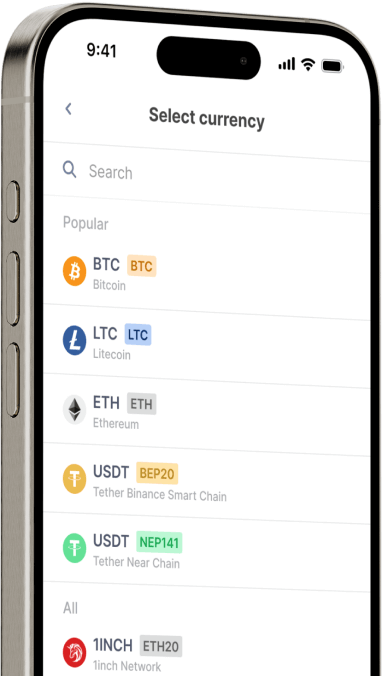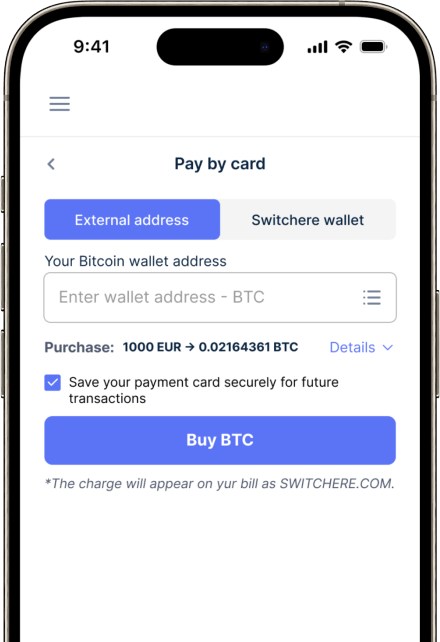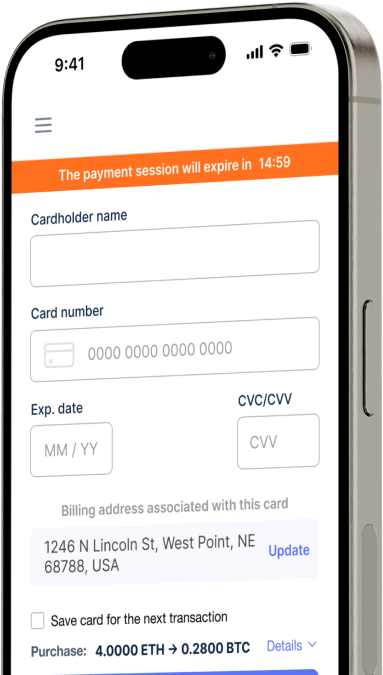Konvertieren
Saudi riyal (SAR) zu Cartesi (CTSI) Sofort
Kaufen Sie Cartesi (CTSI) mit Saudi riyal (SAR) einfach bei Switchere und profitieren Sie von schnellen und sicheren Transaktionen.
Über
Cartesi (CTSI)
Cartesi (CTSI) ist eine Layer-2-Infrastrukturplattform, die entwickelt wurde, um das kritische Problem der rechnerischen Skalierbarkeit und der hohen Kosten in Blockchain-Netzwerken zu lösen. Oft als „Das Blockchain-Betriebssystem“ bezeichnet, ist ihr Hauptziel, dezentrale Anwendungen (dApps) mit einer Komplexität zu ermöglichen, die mit ihren zentralisierten Web2-Pendants konkurrieren kann. Cartesi erreicht dies, indem es Entwicklern ermöglicht, Smart Contracts und dApps in einer vollständigen Linux-Betriebssystemumgebung zu erstellen und dabei gängige Programmiersprachen und Software-Stacks zu verwenden. Dieser Ansatz senkt die Eintrittsbarriere für Entwickler, die von Web2 zu Web3 wechseln, erheblich und fördert ein reichhaltigeres und leistungsfähigeres dApp-Ökosystem, das auf robuster Blockchain-Technologie aufbaut.
Das Herzstück der Plattform ist die Cartesi Machine (CM), eine deterministische virtuelle Maschine, die intensive Berechnungen off-chain ausführt. Durch die Nutzung von Optimistic Rollups kann Cartesi diese komplexen Berechnungen extern verarbeiten und die Ergebnisse mit kryptografischer Sicherheit auf der zugrunde liegenden Layer-1-Blockchain wie Ethereum verankern. Dieses hybride Modell bietet die immense Rechenleistung der Off-Chain-Verarbeitung mit dem nachweisbaren Vertrauen eines On-Chain-Digital-Ledgers. Der native Utility-Token, CTSI, ist integraler Bestandteil der Tokenomics des Netzwerks. Er wird für das Staking innerhalb von Cartesis Noether Proof-of-Stake (PoS) Sidechain verwendet, wo Node-Betreiber helfen, das Netzwerk zu sichern und Belohnungen zu verdienen. CTSI fungiert auch als Zahlungsmittel für Berechnungs- und Datenverfügbarkeitsdienste innerhalb des Ökosystems.
Andere 150+ Kryptowährungen für Saudi riyal (SAR) kaufen
Andere Münzen für Saudi riyal (SAR)
-
SAR zu ZRX
-
SAR zu 1INCH
-
SAR zu AAVE
-
SAR zu ACH
-
SAR zu ALGO
-
SAR zu TLM
-
SAR zu ANKR
-
SAR zu APE
-
SAR zu NFT
-
SAR zu API3
-
SAR zu APT
-
SAR zu ARPA
-
SAR zu AUDIO
-
SAR zu AVAX
-
SAR zu AVAX
-
SAR zu AXS
-
SAR zu BADGER
-
SAR zu BAL
-
SAR zu BNT
-
SAR zu BAT
-
SAR zu BNB
-
SAR zu BSW
-
SAR zu BSV
-
SAR zu BLUR
-
SAR zu BONE
-
SAR zu CTSI
-
SAR zu CELR
-
SAR zu CELO
-
SAR zu CEL
-
SAR zu LINK
-
SAR zu CHZ
-
SAR zu CHR
-
SAR zu C98
-
SAR zu COMP
-
SAR zu CFX
-
SAR zu PEOPLE
-
SAR zu CVX
-
SAR zu ATOM
-
SAR zu CTC
-
SAR zu CRV
-
SAR zu DAI
-
SAR zu DASH
-
SAR zu MANA
-
SAR zu DENT
-
SAR zu DGB
-
SAR zu DYDX
-
SAR zu XEC
-
SAR zu EOS
-
SAR zu ETC
-
SAR zu ENS
-
SAR zu ETHW
-
SAR zu FET
-
SAR zu FIL
-
SAR zu FLOKI
-
SAR zu GALA
-
SAR zu GNO
-
SAR zu ONE
-
SAR zu HBAR
-
SAR zu HOT
-
SAR zu HOOK
-
SAR zu ICX
-
SAR zu ILV
-
SAR zu IMX
-
SAR zu INJ
-
SAR zu ICP
-
SAR zu IOST
-
SAR zu IOTX
-
SAR zu JASMY
-
SAR zu JST
-
SAR zu KAVA
-
SAR zu KCS
-
SAR zu KSM
-
SAR zu KNC
-
SAR zu LDO
-
SAR zu LQTY
-
SAR zu LPT
-
SAR zu LOOKS
-
SAR zu LRC
-
SAR zu LUNA
-
SAR zu MKR
-
SAR zu MASK
-
SAR zu EGLD
-
SAR zu ALICE
-
SAR zu NEAR
-
SAR zu XEM
-
SAR zu NEXO
-
SAR zu NOT
-
SAR zu NMR
-
SAR zu OKB
-
SAR zu OMG
-
SAR zu ONT
-
SAR zu EDU
-
SAR zu OP
-
SAR zu OGN
-
SAR zu CAKE
-
SAR zu PAXG
-
SAR zu PENDLE
-
SAR zu DOT
-
SAR zu POL
-
SAR zu QTUM
-
SAR zu QNT
-
SAR zu RDNT
-
SAR zu XRD
-
SAR zu RVN
-
SAR zu REN
-
SAR zu RSR
-
SAR zu RLC
-
SAR zu RPL
-
SAR zu SFP
-
SAR zu SHIB
-
SAR zu SKL
-
SAR zu SXP
-
SAR zu STND
-
SAR zu STG
-
SAR zu XLM
-
SAR zu GMT
-
SAR zu STORJ
-
SAR zu STMX
-
SAR zu SUSHI
-
SAR zu SNX
-
SAR zu USDT (Polygon)
-
SAR zu USDT (AVAC)
-
SAR zu USDT (BEP20)
-
SAR zu USDT (ERC20)
-
SAR zu USDT (SPL)
-
SAR zu USDT (NEP141)
-
SAR zu USDT (FA2)
-
SAR zu USDT (TRC20)
-
SAR zu USDT (JETTON)
-
SAR zu XTZ
-
SAR zu GRT
-
SAR zu SAND
-
SAR zu TFUEL
-
SAR zu THETA
-
SAR zu RUNE
-
SAR zu TON
-
SAR zu TUSD (BEP20)
-
SAR zu TUSD (TRC20)
-
SAR zu TWT
-
SAR zu UOS
-
SAR zu UMA
-
SAR zu UNI
-
SAR zu USDC (Polygon)
-
SAR zu USDC (SPL)
-
SAR zu USDC (OP)
-
SAR zu USDC (BEP20)
-
SAR zu USDC (AVAC)
-
SAR zu USDC (ARB)
-
SAR zu USDC (ERC20)
-
SAR zu VET
-
SAR zu VRA
-
SAR zu WAXP
-
SAR zu WOO
-
SAR zu WLD
-
SAR zu WBTC
-
SAR zu WMINIMA
-
SAR zu XDC
-
SAR zu YFI
-
SAR zu YGG
-
SAR zu ZIL
Wie man Cartesi (CTSI) kauft
Häufig gestellte Fragen
-
Was ist das Handelspaar SAR/CTSI und warum ist es für Entwickler von Bedeutung?
Das SAR/CTSI-Paar ermöglicht den Kauf von Cartesi (CTSI), dem Utility-Token des 'The Blockchain OS', mit Saudi-Riyal. Seine Bedeutung liegt darin, dass es Entwicklern in Saudi-Arabien einen direkten Fiat-On-Ramp zur Layer-2-Infrastruktur von Cartesi bietet. Dies ermöglicht es ihnen, dezentrale Anwendungen in einer Linux-Umgebung zu erstellen und die Einschränkungen herkömmlicher Smart-Contract-Plattformen durch komplexe Off-Chain-Berechnungen zu überwinden.
-
Wie zieht die Verwendung einer Linux-VM durch Cartesi Entwickler zum SAR/CTSI-Paar an?
Die Kerntechnologie von Cartesi, die Cartesi Machine, ist eine virtuelle Linux-Maschine. Dies ist äußerst attraktiv, da es Entwicklern ermöglicht, dApps mit gängigen Programmiersprachen und Softwarekomponenten zu erstellen, mit denen sie bereits vertraut sind. Durch den Erwerb von CTSI mit SAR erhalten Entwickler in der Region Zugang zu einer Plattform, die die Eintrittsbarriere in Web3 erheblich senkt, die Grenzen von Solidity überwindet und eine neue Klasse leistungsfähiger, auf der Kette berechenbarer Anwendungen ermöglicht.
-
Welche Gebühren kann ich bei der Abwicklung einer Transaktion von SAR zu CTSI erwarten?
Bei der Umrechnung von SAR in CTSI fallen mehrere potenzielle Gebühren an. Erstens kann Ihre Bank oder Ihr Zahlungsanbieter eine Gebühr für die Einzahlung von SAR auf die Börse erheben. Zweitens berechnet die Kryptowährungsbörse eine Handelsgebühr, entweder eine „Maker“- oder „Taker“-Gebühr, wenn Sie den Kauf im Orderbuch ausführen. Schließlich zahlen Sie, wenn Sie Ihre CTSI von der Börse auf eine private digitale Wallet verschieben, eine Netzwerkabhebungsgebühr, die die Kosten der Blockchain-Transaktion deckt.
-
Welche gängigen Zahlungsmethoden gibt es, um CTSI mit SAR an einer Kryptowährungsbörse zu erwerben?
Um das digitale Asset CTSI mit Saudi-Riyal zu kaufen, verwenden Sie in der Regel eine regulierte Kryptowährungsbörse, die SAR-Einzahlungen unterstützt. Gängige Zahlungsmethoden sind lokale Banküberweisungen von saudischen Banken, Debitkarten und manchmal auch Kreditkarten. Alle seriösen Plattformen verlangen von Ihnen, dass Sie die KYC/AML-Compliance-Prüfungen durchführen, was ein Standard-Sicherheitsverfahren im Einklang mit den Finanzvorschriften ist.
-
Kann ich nach dem Kauf von CTSI mit SAR am Staking teilnehmen?
Ja. Sobald Sie CTSI-Token über ein SAR-Fiat-Gateway erworben haben, können Sie diese auf eine sichere digitale Wallet übertragen, die Sie kontrollieren. Von dort aus können Sie Ihre CTSI an einen Staking-Pool im Noether Proof-of-Stake (PoS)-System von Cartesi delegieren. Das Staking von CTSI trägt zur Sicherung der Datenverfügbarkeit des Netzwerks bei und ermöglicht es Ihnen, Belohnungen zu verdienen, was es zu einer produktiven Nutzung für Ihr digitales Asset macht.
-
Wie löst die Layer-2-Lösung von Cartesi Probleme für Entwickler, die Web3-Anwendungen erstellen?
Cartesi fungiert als Layer-2-Skalierungslösung, die speziell Optimistic Rollups verwendet, um die hohen Kosten und den geringen Durchsatz von Basis-Layer-Blockchains zu bewältigen. Für einen Entwickler, der CTSI mit SAR gekauft hat, bedeutet dies, dass er komplexe und intensive Berechnungen außerhalb der Kette in der Cartesi Machine ausführen kann. Die Ergebnisse werden dann effizient auf der Kette verifiziert. Diese Architektur ermöglicht dApps, die exponentiell leistungsfähiger und kostengünstiger sind als das, was auf Layer-1 allein möglich ist, und ermöglicht die Entwicklung von Mainstream-Software für Web3.




